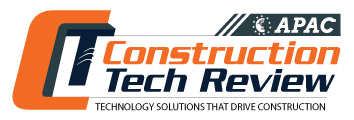THANK YOU FOR SUBSCRIBING

Bridging Al and Construction: How Model Context Protocol is Transforming AEC Workflows
Cesare Caoduro, Digital Development & Integration Director - Computational Engineering, AECOM

 Cesare Caoduro, Digital Development & Integration Director - Computational Engineering, AECOM
Cesare Caoduro, Digital Development & Integration Director - Computational Engineering, AECOMThe construction industry stands at the threshold of its fourth industrial revolution. While Al and large language models (LLMs) have captured headlines across sectors, their practical implementation in Architecture, Engineering, and Construction (AEC) has remained fragmented—until now. The Model Context Protocol (MCP), released by Anthropic in late 2024, represents a paradigm shift that could finally unlock Al’s transformative potential for construction workflows.
Beyond Desktop Demos: The Enterprise Reality
Most MCP demonstrations focus on desktop applications-VS Code extensions, Anthropic Desktop integrations, or local proof-of-concepts. While these showcase technical capabilities, they miss the broader enterprise reality. Construction professionals don’t need another desktop tool; they need seamless, cloud-accessible solutions that integrate with existing workflows.
MCP’s true value lies not in replacing APIs but in providing a standardized context management layer that enables LLMs to interact more effectively with external systems. Think of it as “USB-C for Al integrations”- a universal connector that allows Al models to communicate with diverse data sources and services without custom integration work.
The AEC Integration Challenge
The construction industry has long struggled with API consumption, primarily due to knowledge gaps around integration and practical usage. Consider the typical scenario: a project manager needs real-time access to BIM models, loT sensor data, cost databases, and delivery schedules. Traditionally, this requires navigating multiple software platforms, each with its own interface and data format.
MCP addresses this fragmentation by simplifying interactions and allowing LLMs to consume the correct tools for users. These tools serve as intelligent wrappers around API functions, enabling conversational access to complex data systems. Instead of learning multiple software interfaces, professionals can extract essential information through simple natural language prompts.
Practical Applications: Autodesk Platform Services
To demoznstrate MCP’s potential, we developed an implementation using Autodesk Platform Services (APS) built on .NET Aspire-Microsoft’s cloud-native application platform. This approach offers several strategic advantages:
URL-First Connectivity: Deploy cloud-hosted MCP servers accessible via HTTPS endpoints, eliminating local installation requirements and plugin management complexity.
Distributed Architecture: Each MCP server operates as an independent micro service, enabling isolated scaling, independent versioning, and seamless updates-essential for enterprise-grade reliability.
Built-in Observability: Integration with Application Insights and monitoring solutions provides request metrics, error rates, and performance traces across MCP endpoints, ensuring system reliability.
Our implementation includes multiple components: a main application host for service coordination, Server-Sent Events (SSE) for real-time communication, standard I/O servers for command-line integration, and specialized tools for APS integration. The modular architecture supports both cloud deployment and local container execution via Docker.
Transforming Construction Workflows
The practical implications are significant. Imagine an Al assistant capable of retrieving real-time project schedules, resource allocations, and bid analyses without switching between software platforms. A few conversational prompts could generate charts detailing project deliveries, visualize model updates, or identify clashes between building systems.
“The fourth industrial revolution in construction isn’t just about Al—it’s about intelligently connected systems that amplify human expertise”
MCP enables workflows that previously required custom applications. A single Al agent or coordinated team of specialized agents can query BIM models, extract quantities and schedules, enrich information with IOT sensor feeds, and push results directly to dashboards. This represents a fundamental shift toward a more fluid, data-driven construction environment.
LLMs excel at handling unstructured data, interpreting and cleaning information based on semantic meaning rather than rigid formatting requirements. This capability is particularly valuable in construction, where data integrity often varies across projects and systems.
Security and Enterprise Considerations
Enterprise adoption requires robust security frameworks. While MCP’s official authorization specification remains under development, practical implementations can leverage existing OAuth infrastructure. Our approach uses Autodesk Platform Services’ authentication system as a gatekeeper, implementing three-legged PKCE flows to ensure credentials remain on trusted domains.
The authentication process involves browser-initiated OAuth requests, secure token exchanges, and transparent middleware handling. Agents never access raw tokens directly-they simply call tools by name and arguments while the system manages secure credential injection.
Looking ahead, the MCP specification is evolving toward OAuth 2.1 alignment, clearly distinguishing between clients requesting capabilities, resource servers hosting them, and authorization servers issuing tokens. Future implementations may support Identity assertion authorization grants, enabling cleaner separation of concerns and enhanced enterprise security.
Market Dynamics and Monetization
MCP opens new monetization opportunities for platform providers and developers. Companies offering MCP infrastructure benefits from subscriptions and usage fees, while individual developers can create specialized tools addressing specific construction pain points.
This mirrors the micro-SaaS trend, potentially creating MCP marketplaces similar to app stores. Al models orchestrating multiple MCPs could accomplish complex construction tasks much like smartphones coordinate multiple applications.
Implementation Recommendations
As the industry embraces MCP, organizations should engage while maintaining flexibility for evolving standards. Current implementations work within what one infrastructure provider candidly describes as an “underdeveloped framework that hasn’t reached maturity.”
Key considerations include:
• Start with pilot projects focusing on specific pain points rather than comprehensive deployments.
• Prioritize cloud-native architectures that support both immediate needs and future scalability
• Implement robust monitoring to track performance and identify integration issues
• Plan for standard evolution by building modular, adaptable systems
The Road Ahead
MCP represents more than a technical protocol-it’s a foundation for the construction industry’s digital transformation. By standardizing how Al agents discover and interact with construction data systems,
MCP could accelerate the shift toward truly integrated, intelligent project environments.
The technology’s success will depend on addressing enterprise concerns around security, scalability, and reliability while maintaining the simplicity that makes Al accessible to construction professionals. Early implementations like our APS integration demonstrate the potential, but widespread adoption requires continued development of both technical standards and practical tools.
As we move forward, the construction industry has an opportunity to lead rather than follow in Al adoption. MCP provides the infrastructure; the challenge now is building the applications that will transform how we design, build, and manage the built environment.
The fourth industrial revolution in construction isn’t just about Al—it’s about intelligently connected systems that amplify human expertise. MCP offers the connective tissue to make that vision a reality.
Read Also
Bringing Information Security to the Core
Data-Driven Approach For More Efficient And Low-Emission Infrastructure Construction And Maintenance
Social Value: Investing in the Legacy of our Projects
Opportunities Offered By Satellite Technology And Low Earth Orbit To The Construction Industry
Transforming Construction through Technology Transforming Construction through Technology
Embracing Employee's Uniqueness by Implementing Individual Development Program

 Copyright © 2025 All Rights Reserved | by:
Copyright © 2025 All Rights Reserved | by: Construction Tech Review
| Subscribe | About us | Sitemap| Editorial Policy| Feedback Policy










